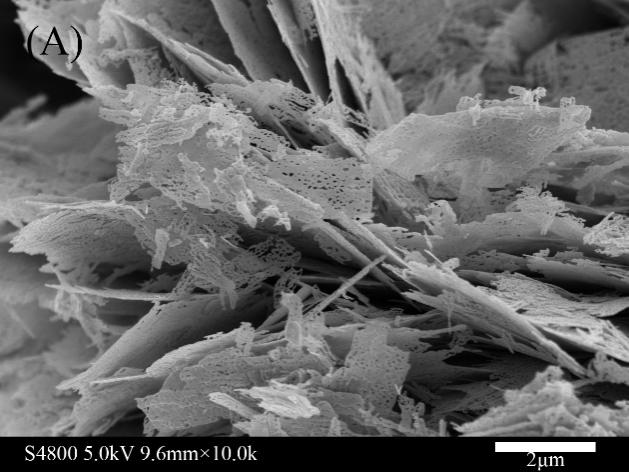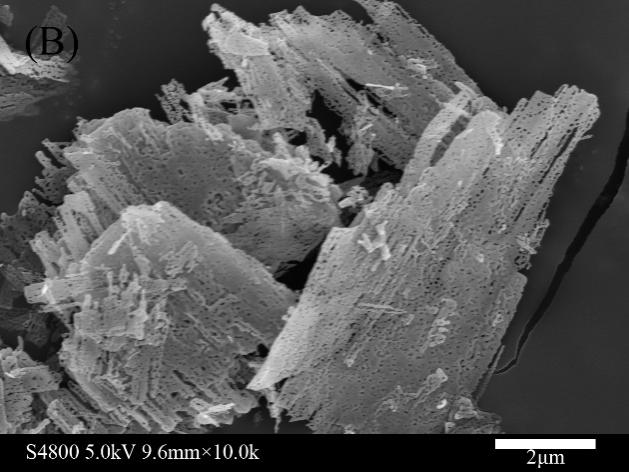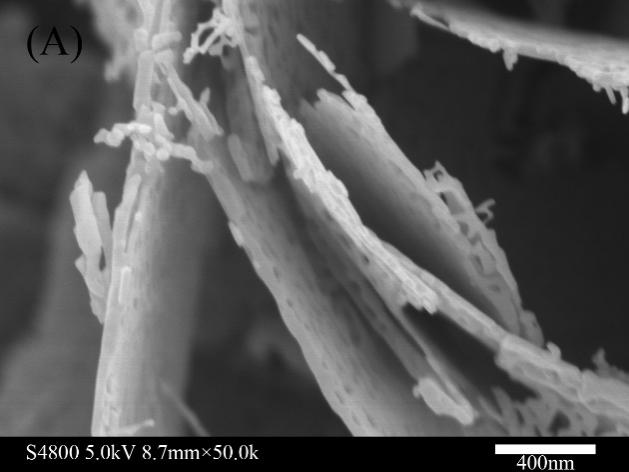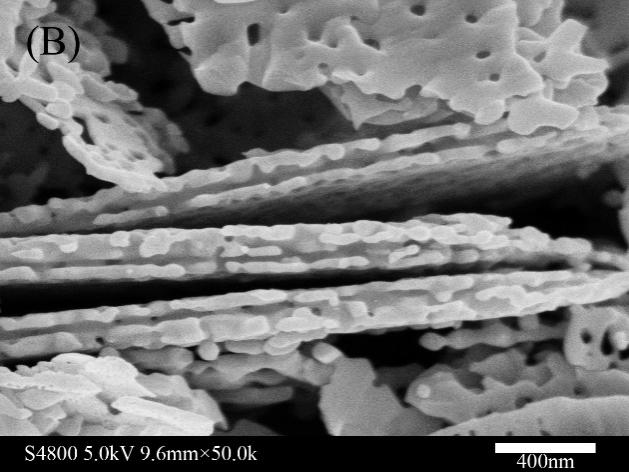Nb2C/ZnO复合材料的制备及光催化性能研究毕业论文
2021-11-25 23:14:48
论文总字数:23141字
摘 要
我们正生活在一个巨大的化学实验场中,人们不加以节制的使用能源,这些化石能源正在逐渐枯竭。每年有大量的化学物质被排放到空气中和河流中。这些化学物质正在酿造一种灾难性的破坏,大气和水的污染问题已经迫在眉睫。所以,开发环保高效新能源就显得尤为重要。科学家经过不断的实验,将目光放在了一种热值高且无污染的二次能源上--氢能。地球上水资源丰富,而氢元素又以化合态存在于水中,但如何将水分解制氢成为了难点。直到1972年,由日本东京大学Fujishima A和Honda K[1]两位教授首次报告发现TiO2单晶电极光催化分解水从而产生氢气这一现象后,越来越多种类的光催化剂被制作出来,但都有着自身的缺陷还需改进。本论文以纳米ZnO为主体,从光催化剂复合改性方面着手以解决ZnO光生电子空穴复合率高的问题。利用Nb2C这一种典型的MX相材料所具有的高导电性、高比表面积等优点,满足了电荷截流子的快速转移,大大提高了光生电子和空穴的分离效率,同时降低了光生电子和空穴的结合的机会,从而提高了光催化效率。本文将高纯度的Nb粉,Al粉和NbC粉末作为原料,采用放电等离子烧结(SPS)法合成Nb2AlC前驱体,采用LiF/HCl刻蚀剂处理Nb2AlC前驱体制备Nb2C纳米片,然后通过水热法制备片状ZnO粉体,最后取制备得到的ZnO粉体溶于25mL无水乙醇中,再加入作为MXene材料的Nb2C溶液,60℃水浴加热搅拌和超声分散后,对混合溶液进行烘干、研磨,得到复合催化剂粉体。并研究了原料配比温度等对Nb2C/ZnO复合材料物相组成和形貌结构的影响。
关键词:光催化剂 催化 纳米ZnO MX Nb2C
Abstract
We are living in a huge chemical laboratory, where people are using energy unchecked, and these fossil fuels are running out. Large quantities of chemicals are released into the air and into rivers every year. These chemicals are brewing a catastrophic destruction of the atmosphere and water pollution. Therefore, the development of environmentally efficient new energy is particularly important. After continuous experiments, scientists focus on a high calorific value and no pollution of secondary energy - hydrogen energy. On the other hand, hydrogen element exists in water in a combined state. Water resources are abundant on earth, but how to decompose water to produce hydrogen has become a difficulty. Until 1972, Fujishima A and Honda K [1], two professors from the university of Tokyo, Japan, reported for the first time that TiO2 single crystal electric aurora catalyzed the decomposition of water to produce hydrogen. Since then, more and more kinds of photocatalysts have been produced, but each has its own defects. In this paper, nanometer ZnO is taken as the main body, and the composite modification of photocatalyst is used to solve the problem of high composite rate of photogenerated electron holes in ZnO. The advantages of high conductivity and high specific surface area of Nb2C, a typical mx-phase material, satisfy the rapid transfer of charge interceptors, greatly improve the separation efficiency of photoelectron and hole, and reduce the chance of the combination of photoelectron and hole, so as to improve the photocatalytic efficiency. This paper will be of high purity Nb powder, Al powder and NbC powder as raw material, the discharge plasma sintering (SPS) method is used to synthesize Nb2AlC precursor, using LiF/HCl etching agent Nb2AlC precursor system Nb2C nano-thin films, then slice prepared by hydrothermal method of ZnO powder, finally take the preparation of ZnO powder dissolved of anhydrous ethanol, add as MXene material Nb2C solution ,water bath heating stirring and ultrasonic dispersion, after mixed solution for drying, grinding, The composite catalyst powder was obtained. The influence of the temperature of raw material ratio on the phase composition and morphology of Nb2C/ZnO composite was studied.
Key words: photocatalyst catalysis nanometer ZnO MX Nb2C
目录
摘要........................................................................I
Abstract...................................................................II
第1章 绪论.................................................................1
1.1 光催化材料的发展....................................................1
1.1.1 光催化材料的发展背景..........................................1
1.1.2 光催化的反应原理..............................................1
1.1.3 光催化材料的改良..............................................1
1.1.4 光催化材料的实际应用..........................................2
1.2 MX材料的研究进展....................................................3
1.2.1 MX材料研究现状................................................3
1.2.2 MX材料的性质与优点............................................3
1.3 本实验的研究意义和研究内容..........................................3
1.3.1 研究意义......................................................3
1.3.2 研究内容......................................................3
第2章 实验及测试方法.......................................................5
2.1 实验仪器............................................................5
2.2 实验原料和试剂......................................................5
2.3 实验方案............................................................5
2.4材料物相和结构表征...................................................6
2.4.1 X射线衍射(XRD)分析..........................................6
2.4.2 扫描电子显微镜(SEM)分析......................................6
2.5 材料的光催化性能测试................................................6
第3章 Nb2C/ZnO复合材料的制备及其光催化性能研究.............................7
3.1 前言................................................................7
3.2 实验................................................................7
3.2.1 Nb2AlC前驱体的制备............................................7
3.2.2 Nb2C的制备....................................................7
3.2.3 ZnO的制备.....................................................7
3.2.4 Nb2C/ZnO复合材料的制备........................................7
3.3 实验结果与讨论......................................................8
3.3.1 反应温度和时间对ZnO形貌的影响................................8
3.3.2 ZnO粉体的加入量对复合光催化剂光催化效率的影响................10
3.4本章小结............................................................10
第4章 结论与展望..........................................................12
4.1 本文结论...........................................................12
4.2 本文创新之处.......................................................12
4.3 未来的展望.........................................................13
致谢.......................................................................14
参考文献 ..................................................................15
附录.......................................................................17
第1章 绪论
请支付后下载全文,论文总字数:23141字
相关图片展示:
